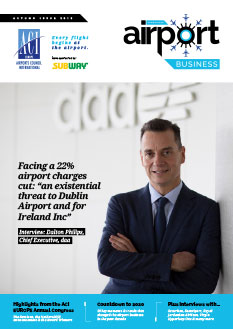Revenues evaporating, costs being cut but rigidly fixed, pricing pressures, concerns about the ability of our clients, the airlines, to remain viable: every alarm and warning signal in the airport management’s cockpit is going off. Can we pull out of this dive before it’s too late? Report by Mikkel Krogh, Fabio Soleri and Michael Stanton-Geddes.
The threat of airport closure means Europe faces the prospect of the collapse of a significant part of its air transport system – unless governments step up to provide the required support. So far, few have done so.
Heading into the last month of 2020, European airports are facing their 9th month of depressed passenger traffic volumes. This means that airports, who are sized for ‘100’ but will only serve ‘30’ traffic units this year on average – with lows in the low ‘20s’ – will have revenues that are nowhere close to covering costs. Staff hours have been reduced, but people still need to be paid. Lights can be turned off, but electric utilities still send bills. Debt can be re-negotiated, but interest still needs to be paid to the bank.
Europe’s 750 airports1 are making these difficult calculations. Whether you served 80 million passengers in 2019, like London-Heathrow Airport, or only 4 thousand passengers like Salerno Costa d’Amalfi Airport, the runway is still a strip of concrete that is thousands of metres long (yes, the big airports have multiple runways), and the cost must be depreciated over time and collected in user fees.
Ultimately, we can estimate that somewhere around 200 airports in Europe face a high risk of insolvency as early as 3 months away. This is based on a statistical analysis of airport financial data, focusing on a sample of airports that in 2019 welcomed fewer than 5 million passengers and that are not parts of networks, considering cash on hand, current assets and liabilities, debt, and annual net results. The airports facing insolvency are mainly regional airports which serve – and are integral to – local communities. The potential ripple-effect upon local employment and economies is clear. Financial support from government will be crucial in averting rising geographic inequality and damaged social cohesion.
Some airports, especially those that have the high traffic volumes to benefit from economies of scale, started 2020 with strong balance sheets. Facing the enormity of the loss of revenue these airports still had to cut costs to the bone to keep adequate cash flow. So far this year, we’ve seen airports reporting operating cost reductions of 12% to 30%, and that includes the increases needed to implement higher levels of cleanliness in terminals.
Liquidity for our large airport peers can be assured by borrowing more money, but that comes with a cost. This sudden increase in total debt – an additional €16 billion for the top 20 European airports – is enormous, and even more worryingly net debt levels have also risen to stretched levels given the forecasted cash flows and risk profile for (much needed) future market access.
Finally, the ability of airports to maintain the same revenue levels in the future is uncertain. Let’s be honest: airports are fighting to keep their market shares. They are offering large incentives to airlines and rebates per passenger carried by the airline.
70% of airports are offering new incentives specifically implemented since the COVID-19 restrictions hit air travel, according to a survey of ACI EUROPE’s members this summer. This means that while airport charges may nominally remain flat, or even in some cases increase a few percentage points, as set out in regulatory contracts, the airport’s actual aeronautical revenues are likely to be significantly lower than the level of cost coverage for much longer.
Airports serving fewer than 5 million passengers a year already have challenges financing investment, and those serving fewer than 1 million passengers are year are more likely than not to struggle covering just their operating costs. These airports simply do not have the space on their balance sheet to cut charges.
It may strike a jarring note to talk about cash flow when so many are suffering the health effects of the COVID-19 virus, but there is a stark financial reality being faced by a significant part of the European air connectivity infrastructure. Somewhere around 200 European airports face insolvency in the coming months if passenger traffic does not start to recover by the year-end. Without these airports, family travel will suffer, tourism to regions will be hindered, and business recovery will be slow.
Mikkel Krogh is Chair ACI EUROPE Economics Committee and Director, Head of Regulatory Affairs, Copenhagen Airports A/S.
Fabio Soleri is Vice-Chair ACI EUROPE Economics Committee and Head of Regulatory Affairs, Aeroporti di Roma S.p.A.
Michael Stanton-Geddes is Head of Economics and Competition at ACI EUROPE.







